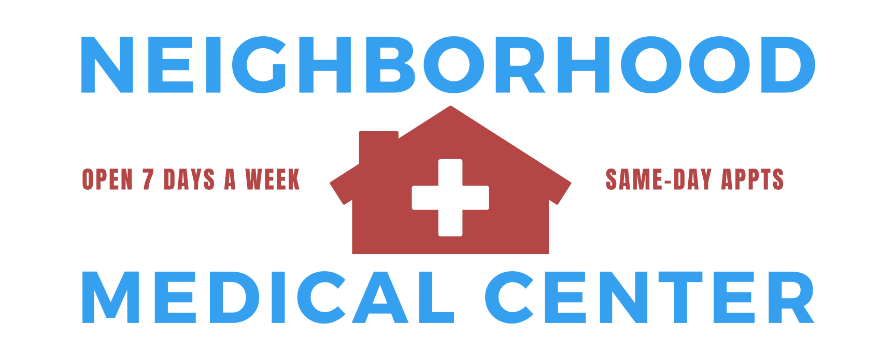Osteoarthritis Treatment
Thursday, September 12, 2024 | By: Neighborhood Medical Center
Understanding Osteoarthritis: Managing Joint Health at Neighborhood Medical Center
Osteoarthritis (OA) is the most common form of arthritis and a leading cause of joint pain and disability worldwide. It affects millions of people, causing discomfort, stiffness, and reduced mobility. At Neighborhood Medical Center, we are dedicated to helping patients manage osteoarthritis effectively through a comprehensive approach that includes diagnosis, treatment, and lifestyle modifications. In this blog post, we’ll explore what osteoarthritis is, its symptoms, risk factors, and the various treatment options available at our facility.
What is Osteoarthritis?
Osteoarthritis is a degenerative joint disease characterized by the breakdown of cartilage—the smooth, cushioning tissue that covers the ends of bones in a joint. Cartilage allows bones to glide over each other smoothly, and as it deteriorates, the bones can begin to rub together, causing pain, swelling, and decreased joint mobility.
OA commonly affects joints in the hands, knees, hips, and spine. The condition is often described as a “wear-and-tear” disease because it typically develops gradually over time as the cartilage wears down. However, it can also result from previous joint injuries or genetic factors that predispose individuals to cartilage deterioration.
Symptoms of Osteoarthritis
The symptoms of osteoarthritis can vary in intensity and may include:
1. Joint Pain
Pain is one of the hallmark symptoms of osteoarthritis. It often starts as a dull ache in the affected joint and can become more pronounced with movement or after prolonged periods of inactivity. The pain may improve with rest but can return after physical activity.
2. Stiffness
Joint stiffness, particularly in the morning or after sitting for long periods, is another common symptom. This stiffness can make it challenging to move the joint freely and perform everyday tasks.
3. Swelling
Inflammation in the affected joint can lead to swelling, which may be accompanied by warmth and tenderness. Swelling often results from increased fluid in the joint or irritation of the surrounding tissues.
4. Reduced Range of Motion
As osteoarthritis progresses, the range of motion in the affected joint may decrease. This can make it difficult to perform movements that require flexibility and can affect daily activities such as walking, climbing stairs, or bending.
5. Joint Deformities
In advanced cases of osteoarthritis, changes in the joint structure can occur, leading to visible deformities. This may include bony enlargements or changes in joint alignment.
Risk Factors for Osteoarthritis
Several factors can increase the likelihood of developing osteoarthritis:
1. Age
The risk of osteoarthritis increases with age. While OA can affect individuals of any age, it is more common in older adults due to the cumulative wear and tear on the joints over time.
2. Gender
Women are more likely than men to develop osteoarthritis, especially after the age of 50. Hormonal changes, particularly after menopause, may contribute to this increased risk.
3. Genetics
A family history of osteoarthritis can increase your risk of developing the condition. Genetic factors may influence cartilage health and joint structure.
4. Joint Injuries
Previous joint injuries, such as those sustained from sports or accidents, can increase the risk of developing osteoarthritis later in life. Injuries can lead to long-term changes in joint structure and function.
5. Obesity
Excess body weight puts additional stress on weight-bearing joints, such as the knees and hips. This increased pressure can contribute to the development and progression of osteoarthritis.
6. Overuse
Repetitive stress on the joints from certain occupations or activities can contribute to the development of osteoarthritis. Jobs or sports that involve repetitive movements or heavy lifting may increase the risk.
Diagnosis of Osteoarthritis
Diagnosing osteoarthritis involves a combination of medical history, physical examination, and imaging tests. At Neighborhood Medical Center, our healthcare providers use the following methods to diagnose and assess osteoarthritis:
1. Medical History
Your provider will ask about your symptoms, including the onset, duration, and severity of joint pain and stiffness. They will also inquire about any previous joint injuries, family history of arthritis, and lifestyle factors that may impact your joint health.
2. Physical Examination
A physical exam involves assessing the affected joints for tenderness, swelling, and range of motion. Your provider may also evaluate your gait and functional abilities to determine the impact of osteoarthritis on your daily activities.
3. Imaging Tests
Imaging tests, such as X-rays or MRI scans, can provide detailed information about the condition of the cartilage, bones, and other joint structures. X-rays can reveal changes such as joint space narrowing, bone spurs, and cartilage loss. MRI scans offer a more detailed view of soft tissues and can help assess the extent of cartilage damage.

